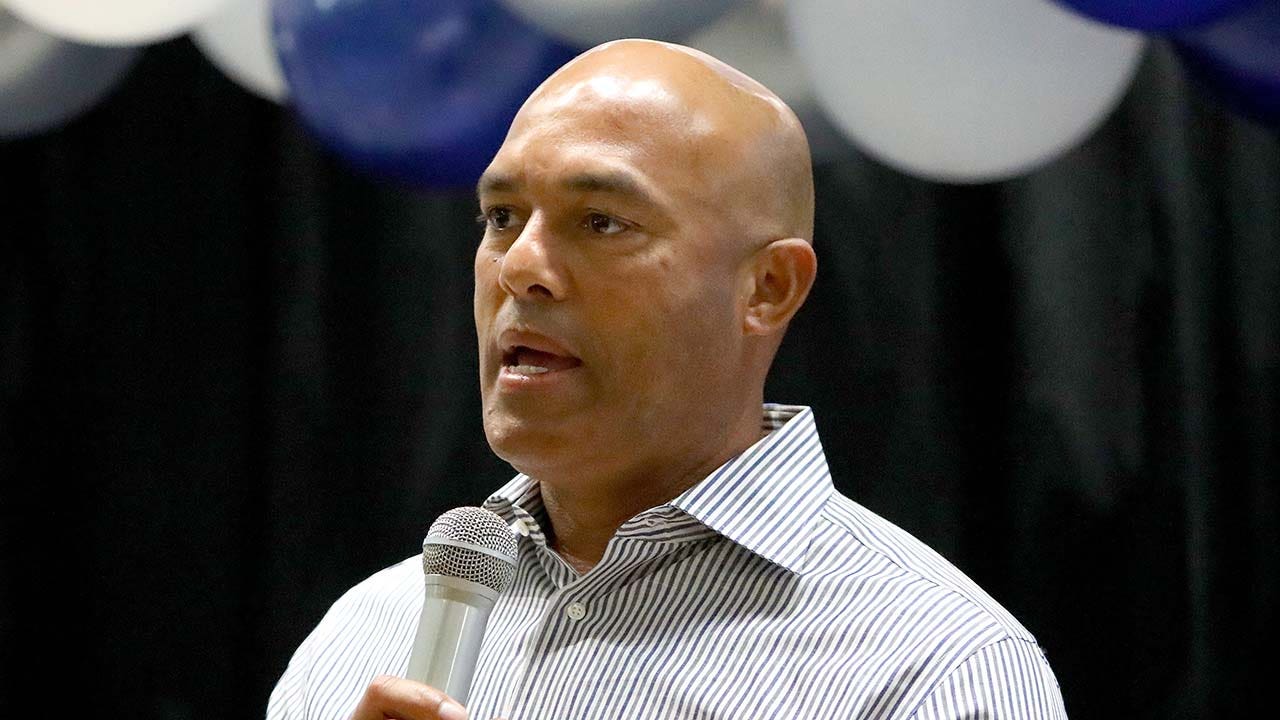Hearing Protection Options for Shooting Sports
Shooting sports enthusiasts face a unique challenge: the need to protect their hearing while maintaining situational awareness. Whether you’re at the range, in a shooting competition, or out hunting, the loud reports from firearms can cause permanent hearing damage if proper precautions aren’t taken. This article explores the various hearing protection options available, highlighting their benefits and potential drawbacks across different shooting scenarios.
The Importance of Hearing Protection
Before diving into specific options, it’s crucial to understand why hearing protection is non-negotiable for shooters. A single gunshot can produce sound levels ranging from 140 to 175 decibels, far exceeding the 85-decibel threshold at which hearing damage can occur. Repeated exposure to these loud impulse noises can lead to tinnitus, hearing loss, and other auditory problems. Like many other aspects of personal health, hearing is often taken for granted until one day it’s gone or damaged. Protecting your ears isn’t just about comfort—it’s about preserving a vital sense for years to come.
Passive Earplugs
The simplest and most affordable option for hearing protection comes in the form of passive earplugs. These small, insertable plugs are typically made from foam, silicone, or plastic and work by physically blocking the ear canal to reduce sound transmission.
Foam earplugs are disposable, inexpensive, and offer high noise reduction ratings (NRR) when properly inserted. They’re an excellent choice for occasional shooters or as a backup option. However, they can be less comfortable for extended wear and may muffle sounds unevenly, potentially impacting situational awareness. Howard Leight’s Quiet Band design allows their earplugs to rest comfortably around the neck always at-the-ready.
Reusable silicone or plastic earplugs often feature flanged designs for a better seal and can be more comfortable for long-term use. Some models are specifically designed for shooters, with filters that allow for better speech comprehension while still blocking harmful noise levels.
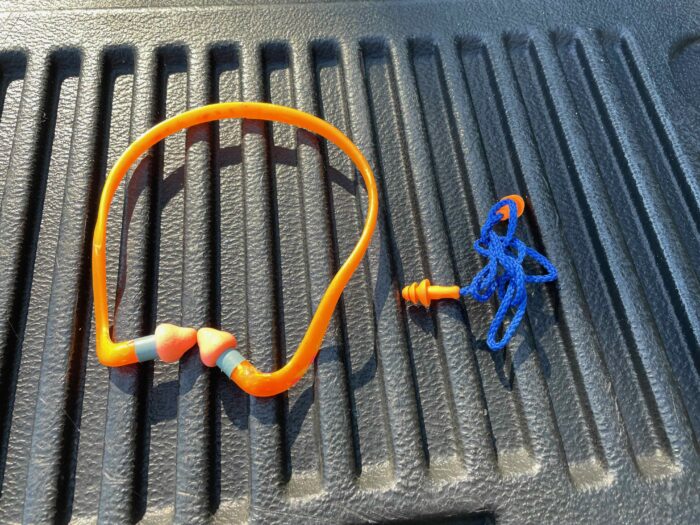
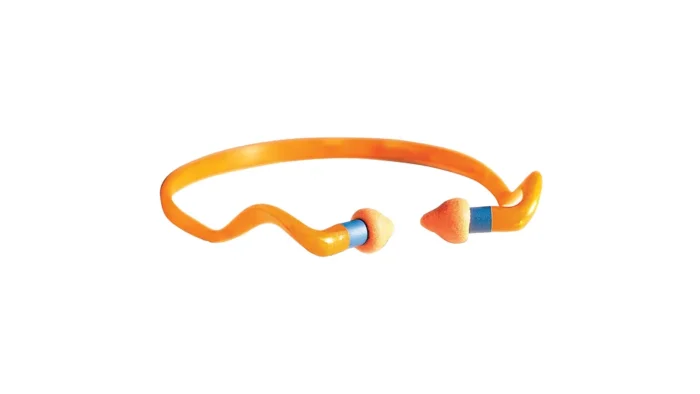
Passive Earmuffs
For those who find earplugs uncomfortable or difficult to insert properly, passive earmuffs present an attractive alternative. These over-the-ear protectors use sound-absorbing materials to dampen noise levels. Many shooters appreciate the ease of use—simply place them over your ears, and you’re protected.
Passive earmuffs come in various styles and sizes, with some designed specifically for shooting sports. They often provide higher NRRs than earplugs and can be more comfortable for extended wear. However, they can interfere with cheek weld when shouldering a long gun and may be hot and bulky in warm weather or during active shooting scenarios.
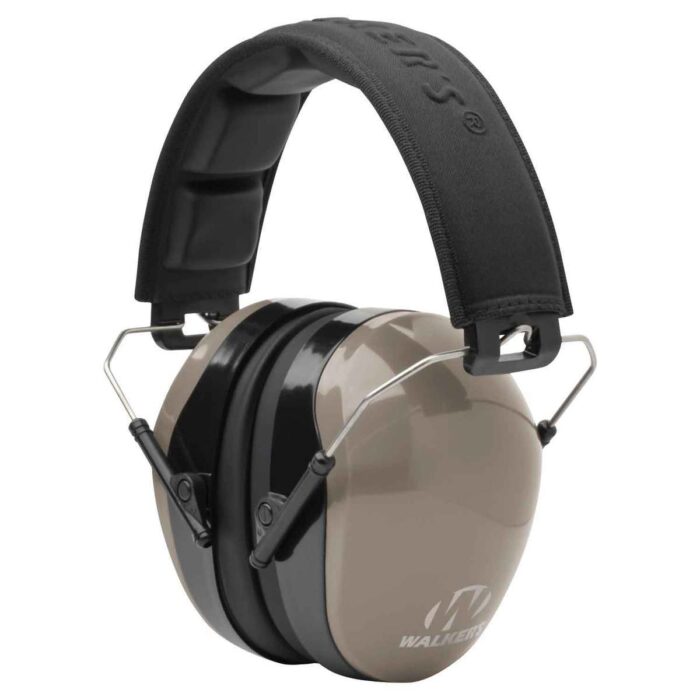
Electronic Hearing Protection
For many serious shooters, electronic hearing protection represents the gold standard in auditory safeguarding. These devices use microphones to pick up ambient sounds and speakers to relay them to the user’s ears. The key feature is their ability to instantly suppress harmful noise levels while amplifying softer sounds.
Electronic earmuffs, such as the Champion Vanquish Pro, are the most common form of this technology. They offer all the benefits of passive earmuffs but with added functionality. Users can hear range commands, conversation, and environmental sounds clearly, but when a shot is fired, the system instantly cuts off to protect against the impulse noise. Many models also feature audio inputs for radios or music players, making them versatile for various shooting activities.
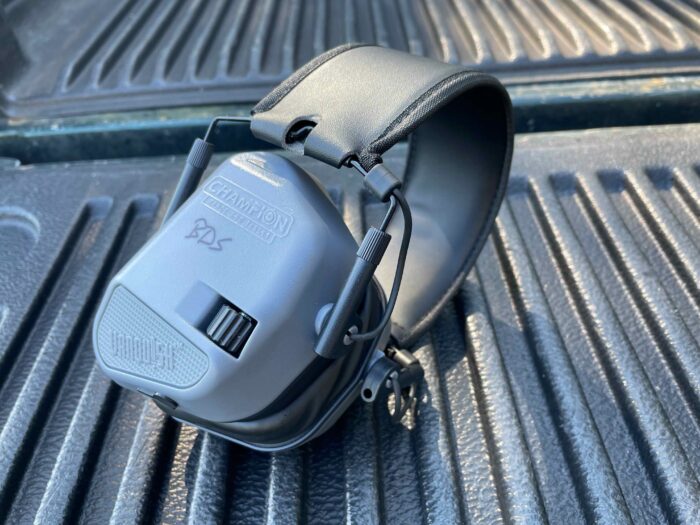
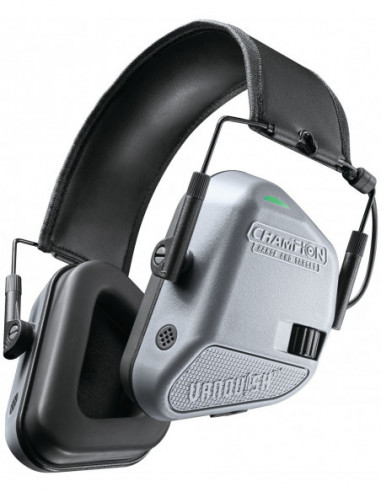
Electronic earplugs, such as Walker’s Rope Hearing Enhancers, offer similar benefits in a more compact form. These in-ear devices provide excellent noise reduction while maintaining comfort and situational awareness. They’re particularly popular among hunters and competitive shooters who need a low-profile solution that won’t interfere with their firearms or equipment.
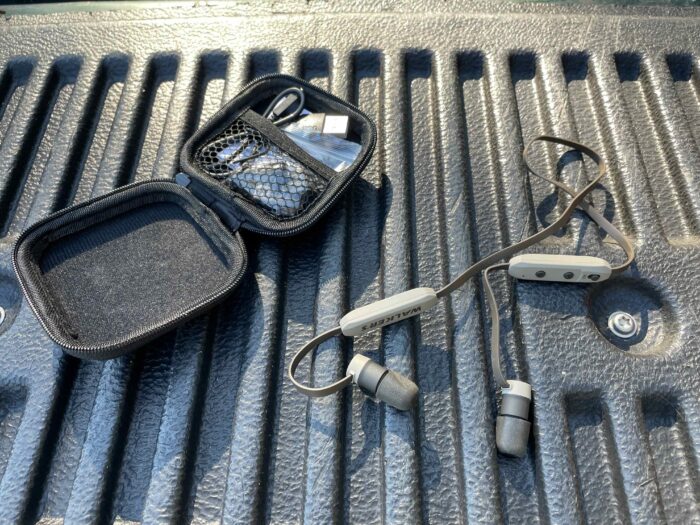
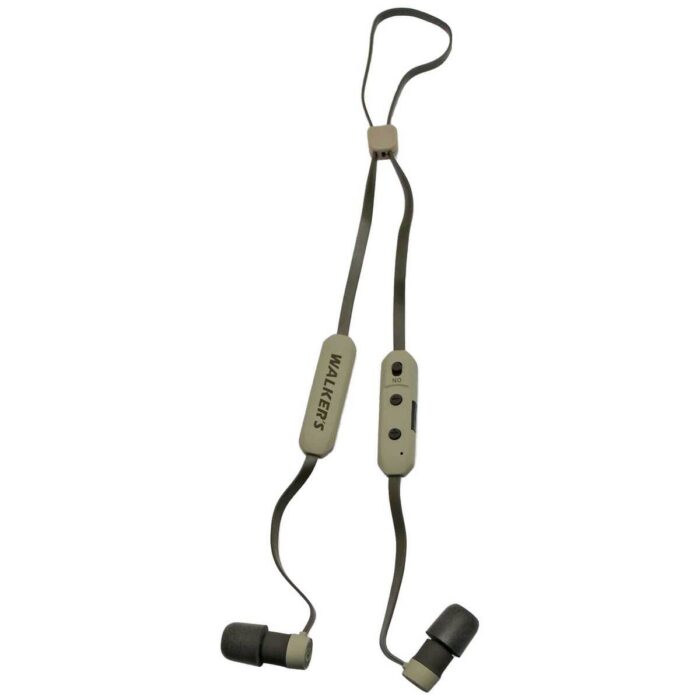
The downside to electronic hearing protection is cost—quality units can be significantly more expensive than passive options. Additionally, they require batteries or charging, which means ongoing maintenance and the potential for failure if not properly cared for.
Custom Molded Earplugs
For shooters seeking the ultimate in comfort and protection, custom molded earplugs are worth considering. These are crafted from impressions of the user’s ear canals, ensuring a perfect fit. The result is superior noise reduction, excellent comfort for extended wear, and minimal interference with other equipment.
Custom plugs can be passive or electronic, with the latter offering the benefits of sound amplification and impulse noise suppression in a tailored package. While the initial cost is high and obtaining them requires a visit to an audiologist, many shooters find the investment worthwhile for the unparalleled fit and protection they provide.
Choosing Protection for Different Shooting Scenarios
Range Practice
At the range, comfort and consistent protection are key. Many shooters opt for over-the-ear protection, either passive or electronic, as they’re easy to put on and take off between sessions. Electronic earmuffs are particularly useful in this setting, allowing for clear communication with range officers and fellow shooters without compromising on safety.
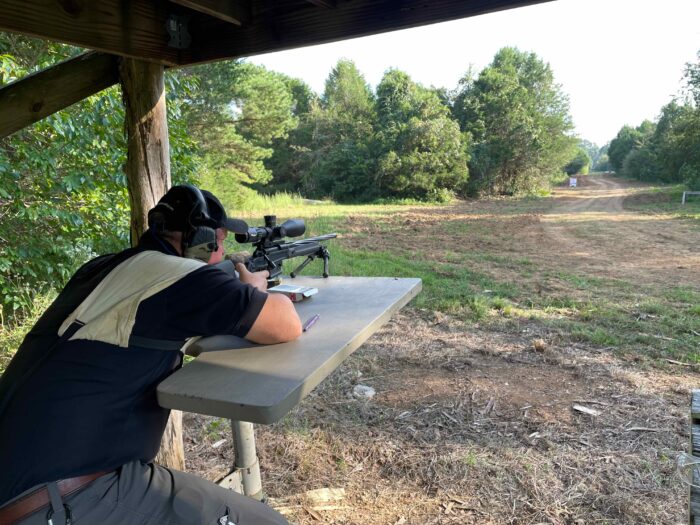
For indoor ranges, where noise levels can be even higher due to reverberation, doubling up with both earplugs and earmuffs is often recommended. This combination provides maximum protection against the sustained exposure typical of range sessions.
Competition
Competitive shooters face unique challenges when it comes to hearing protection. They need solutions that offer robust noise reduction without hindering performance. Electronic earplugs or low-profile electronic earmuffs are popular choices, as they allow for clear hearing of range commands and timers while still protecting against gunshot noise.
Custom molded electronic earplugs are gaining popularity in competitive circles due to their excellent fit and minimal interference with other equipment. The ability to hear subtle environmental cues can be a significant advantage in certain competitive disciplines.
Hunting
Proper hearing protection while hunting is frequently neglected. In fact, 86% of hunters don’t wear hearing protection at all. As hunters, we know that moment when you take the shot is usually an adrenaline-filled moment when our senses are heightened. What many of us don’t realize though is the simple fact that loud decibels, like a gunshot, are causing irreversible damage to our hearing when not using a suppressor. Muzzle brakes are especially loud and known to cause hearing damage.
Also, hunters often require hearing protection that enhances rather than detracts from the outdoor experience. Electronic options such as Tetra’s AlphaShield devices shine in this scenario, amplifying soft sounds like animal movements while still protecting against firearm discharge. In-ear electronic protection is often preferred for its low profile and compatibility with hats and other cold-weather gear. Some hunters opt for more specialized solutions, such as electronic devices with directional microphones that help pinpoint the location of game. Others might choose a neck-worn electronic suppressor or headset that activates only when a shot is fired, allowing for unimpeded natural hearing the rest of the time.
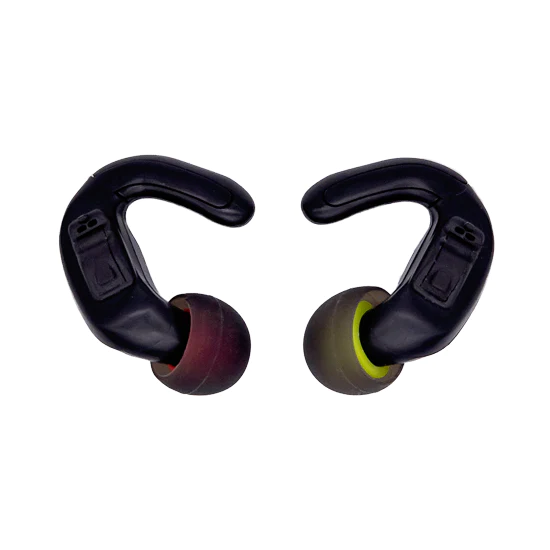
Maintenance and Care
Regardless of the type of hearing protection chosen, proper maintenance is crucial for ensuring ongoing effectiveness. Foam earplugs should be replaced regularly, while reusable plugs and earmuffs should be cleaned according to manufacturer instructions. Electronic devices require battery management and careful storage to prevent damage to sensitive components.
Regular inspection of your hearing protection is important. Look for signs of wear, such as cracks in earmuffs or degradation of ear plug material. Even small imperfections can significantly reduce the protective capacity of these devices.
Wrap Up
Protecting your hearing is a critical aspect of responsible firearm use. The options available today cater to a wide range of preferences and shooting scenarios, from simple foam earplugs to sophisticated electronic systems. When choosing hearing protection, consider factors such as comfort, level of protection, situational awareness needs, and compatibility with your shooting activities.
Remember, the best hearing protection is the one you’ll wear consistently. Experiment with different options to find what works best for you, and don’t hesitate to invest in quality protection—your future self will thank you for preserving this vital sense. Whether you’re a casual plinker, a serious competitor, or an avid hunter, there’s a hearing protection solution that can keep you safe while enhancing your shooting experience.
Read the full article here







